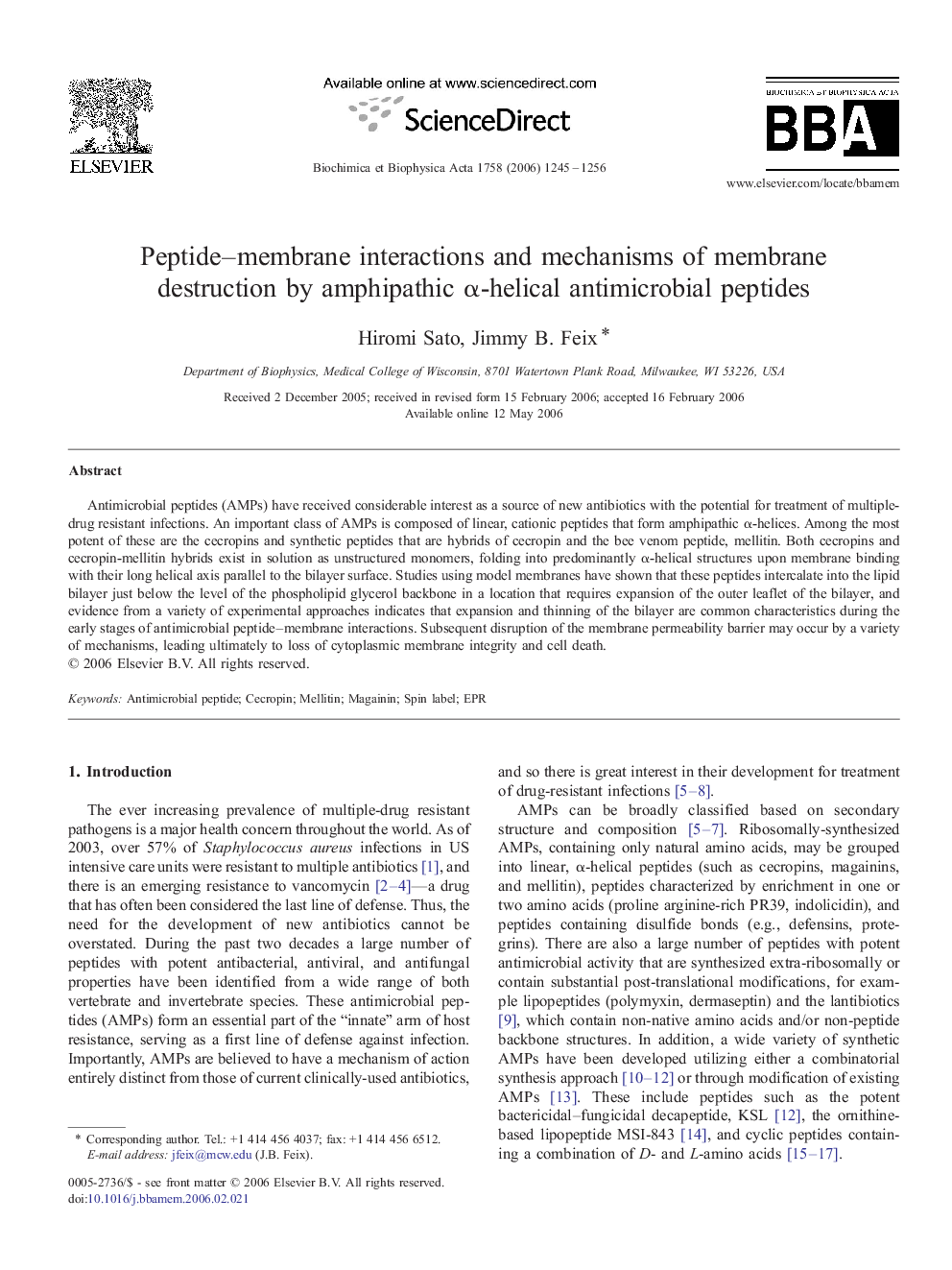| Article ID | Journal | Published Year | Pages | File Type |
|---|---|---|---|---|
| 1946016 | Biochimica et Biophysica Acta (BBA) - Biomembranes | 2006 | 12 Pages |
Antimicrobial peptides (AMPs) have received considerable interest as a source of new antibiotics with the potential for treatment of multiple-drug resistant infections. An important class of AMPs is composed of linear, cationic peptides that form amphipathic α-helices. Among the most potent of these are the cecropins and synthetic peptides that are hybrids of cecropin and the bee venom peptide, mellitin. Both cecropins and cecropin-mellitin hybrids exist in solution as unstructured monomers, folding into predominantly α-helical structures upon membrane binding with their long helical axis parallel to the bilayer surface. Studies using model membranes have shown that these peptides intercalate into the lipid bilayer just below the level of the phospholipid glycerol backbone in a location that requires expansion of the outer leaflet of the bilayer, and evidence from a variety of experimental approaches indicates that expansion and thinning of the bilayer are common characteristics during the early stages of antimicrobial peptide–membrane interactions. Subsequent disruption of the membrane permeability barrier may occur by a variety of mechanisms, leading ultimately to loss of cytoplasmic membrane integrity and cell death.
